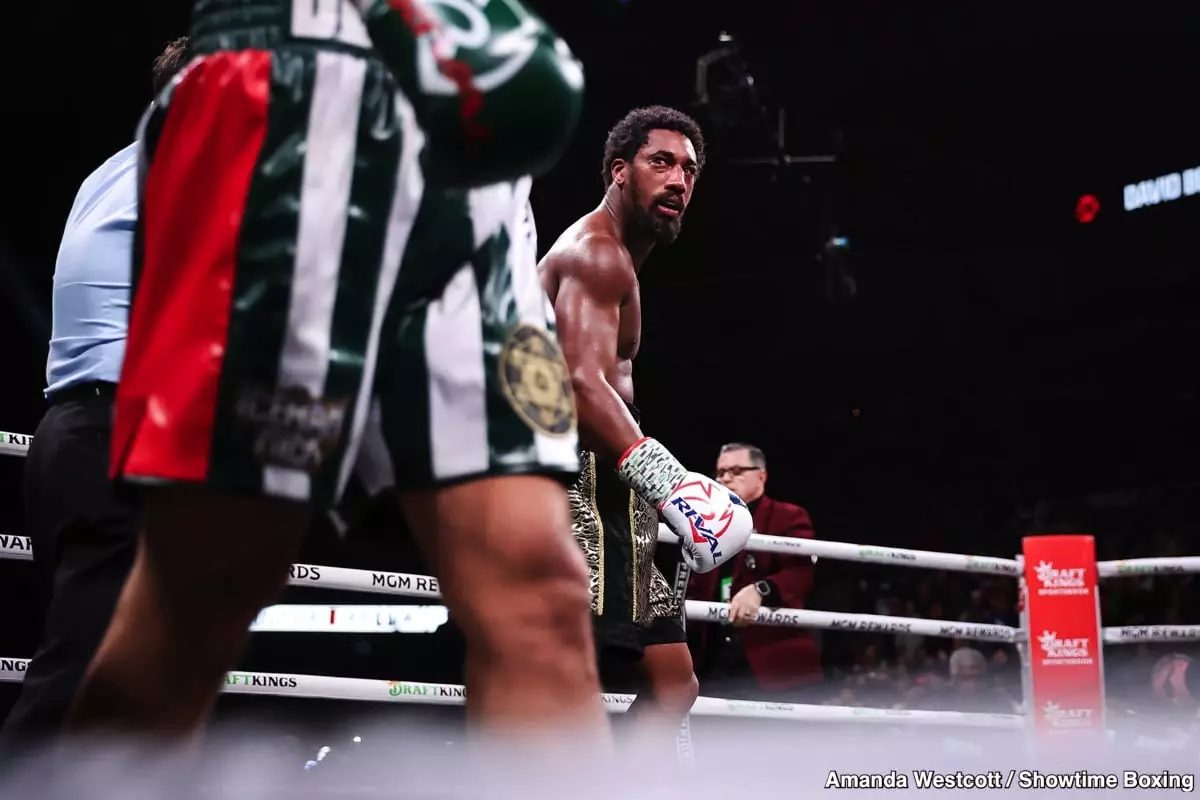Demetrius Andrade, an accomplished boxer with a record of 32 wins and just one loss, has faced intense scrutiny following his defeat to David Benavidez, known as ‘The Mexican Monster’. Having dedicated much of his career to seeking out the best opponents, Andrade now finds himself in a labyrinth of criticism and regret. As a two-division world champion, the expectations placed on him were monumental, and his loss to the significantly larger Benavidez has only intensified the conversation about his career trajectory. Fans and analysts alike argue about whether he should have taken on such a formidable adversary, especially given the glaring size disparity in the boxing ring.
The bout against Benavidez on November 25, 2023, undeniably marked a pivotal moment in Andrade’s career. Many observers noted that he was at a considerable disadvantage, both in weight and age. Benavidez, 26 years old, appeared to possess a significant physical edge, looking more like a cruiserweight than a middleweight once he rehydrated post-weigh-in. Andrade has voiced his frustration that high-profile fighters, including Canelo Alvarez and Gennadiy Golovkin, have largely avoided him during his prime years. This evasion has left Andrade with few options, compelling him to face an opponent who, on paper at least, presented an uphill battle.
The commentary surrounding Andrade suggests a larger issue in boxing, particularly the reluctance of established fighters to face opponents who may represent a significant risk. The avoidance he experienced has arguably contributed to a career that has not achieved its full potential. Andrade’s assertions about wanting to fight the best resonate deeply within the boxing community; his matchmaking has presented challenges that many fighters would find disheartening. His desire to forge a legacy in a competitive era has been thwarted repeatedly, and the consequences of poor match selection cannot be overlooked.
Despite the narrative surrounding his loss, Andrade’s most pressing concern may not be the defeat itself but rather the lengthy absence from the boxing ring that followed. Being inactive for 13 months has serious implications, especially for a fighter in his mid-30s. In the sport of boxing, where age can be as detrimental as physical condition, Andrade’s inactivity possibly jeopardizes any future aspirations of competing at a world-class level. The need to return to the ring is paramount; continued fighting not only keeps one’s skills sharp but also maintains exposure and relevance in an ever-evolving sport.
One cannot discuss Andrade’s career without mentioning the managerial strategies that have, at times, hindered his growth. The partnership with Eddie Hearn initially seemed promising, yet it ultimately fell short in terms of providing Andrade with the high-stakes fights that would elevate his status. Instead, being matched with fighters from the British domestic scene failed to capitalize on his championship credentials. The combination of defensive fighting style and managerial missteps has placed Andrade in a precarious position, causing frustrations for both him and his fanbase.
Looking ahead, Andrade’s path seems fraught with challenges, yet it is not devoid of potential for redemption. His past experiences, both with opponents and management, can serve as valuable lessons moving forward. For a fighter who yearns to be among the elite, the real fight now lies in reclaiming his momentum, securing appropriate matchups, and reinvigorating a career that deserves a brighter spotlight. In boxing, as in life, resilience often becomes the defining trait of a champion, and Andrade’s journey is far from over.


Leave a Reply